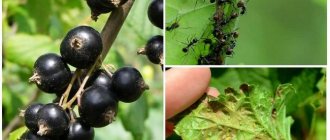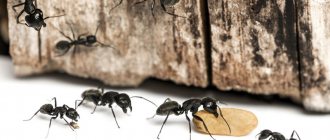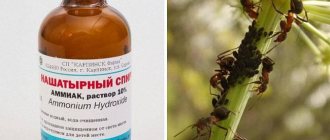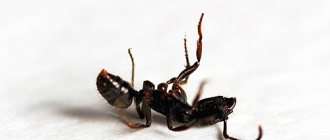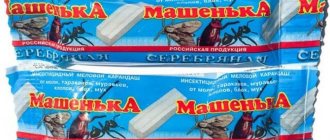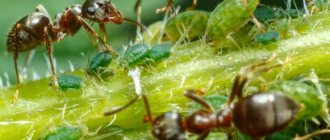Brief information
Name in Latin: Messor structor Difficulty: for beginners Size of individuals: M - workers from 4 to 9 mm, soldiers up to 11 mm, queen up to 12 mm Size of colonies: up to 5,000 individuals Habitat: steppes and semi-deserts, from Portugal to Kazakhstan, and south to Iran Temperature: 23-25 degrees, preferably warmed up Humidity: gradient, from 30% in the arena to 90% in the nest Diet: plant seeds, dead insects Wintering: not required
General information about the genus Messor
The genus Messor includes 110 species of ants adapted to life in the desert zone on almost all continents. Thus, 30 species live in Europe alone, 5 of them in Russia. This:
- Messor aciculatus;
- Messor denticulatus;
- Messor kasakorum;
- Messor rufitarsis;
- Messor constructor.
The genus received the name Messor (reaper) due to the method of collecting grain from the fields. The specificity of nutrition is determined by the nature of vegetation in the desert climate. According to research, ants from one family are able to bring up to 1.5 kg of grain to underground storage facilities. The answer to the question: is the harvester ant a pest that steals the fruits of human labor should be answered in the negative. He harvests his harvest only from the ground, from already damaged spikelets. The grains are stored in moist underground chambers for a long time and periodically germinate. Then the ants chew off the seedlings, and the seeds themselves are ground into powder, moistened with saliva and fed to the larvae.
Reaper ants have their own characteristics:
- large size of individuals;
- peacefulness;
- swarming, nest building in spring.
Let us consider this genus in more detail using the example of the species Messor structor (steppe harvester ant).
Description and features of the Messor constructor type
The steppe harvester ant is the largest among other ants of the subfamily Myrmicinae. The color is dark, reddish-brown. The length of the working insect varies from 4 to 9 mm, the queen – up to 11-15 mm. The body consists of three parts: head, chest, abdomen, connected to each other by jumpers, due to which insects are flexible and mobile. The massive square head of the ant is equipped with jaws-mandibles, which, when bitten, close like a trap. This is convenient for carrying food and crushing grains.
USEFUL TO KNOW : This is interesting: the terrifying jaws of the harvester ant are not an attack weapon, but a device for processing grain.
Ants are clumsy and slow; When irritated, they choose to run away. The species is characterized by sexual polymorphism, that is, the presence of different forms of individuals: females, males, workers, soldiers and transitional forms. Each category of harvester ants performs its duties.
When studying the question of how long harvester ants live, information was obtained that the worker lives up to 3-5 years, and the queen lives up to 20 years.
Reapers live in families of up to 5,000 individuals. The ground part of the anthill looks like a hole, surrounded by a rampart of earth and debris from the grains brought in. Under the ground, the nest looks like an extended vertical tunnel, with passages with cameras running off the sides. The family has been using one house for several years.
Development timeframe
- Egg - 2-3 weeks
- Larva 1-3 weeks (large 2-3)
- The pupa is 2-3 weeks old, depending on the size. The adult appears 4-5 days after complete pigmentation of the pupa.
- Lifespan. Workers live up to 3 years, microgins - from six months to a year. Sexually mature female Messor sp. lived in laboratory conditions for 25 years.
- The appearance of females and males. Full-fledged females develop with a number of 400-500 workers, males - from 1000-1500. It is possible that females and males appear earlier, but they are quickly killed and eaten.
Can ants live without a queen?
Despite the fact that harvester ants are the easiest to care for, significant problems can arise when introducing a new queen.
Can ants live without a queen?
- Yes, but there will be no new family members, and the inhabitants of the colony will simply live out the life that is intended for them. If you want the family to develop, a womb is a must.
- On average, the queen lives from 5 to 25 years, depending on the type and the quality of care for it. There are individuals that live up to 28 years.
Insect
Habitat
The steppe harvester ant is a resident of the steppes and deserts. Its nests can be found in the countries of the Mediterranean coast, Southern and Eastern Europe, the Caucasus, Middle and Central Asia, Afghanistan, Iran, Iraq, Lebanon, Syria, and Israel. On the territory of Russia, in the Republic of Tatarstan, the species is included in the Red Book due to the threat of extinction.
Years
Reapers are ants of deserts and steppes. Such a life developed an interesting feature in them. Almost all species of ants we encounter raise young males and females in the spring, so that by the end of spring or summer they can fly away and give rise to new colonies. The Messors have a completely different strategy: young individuals capable of reproducing are raised not in May, but in August. Next, the winged generation overwinters in its native anthill and flies out by the end of April. At a time when the queens of other ants are still in the larval state, messoras are already beginning to raise the first generation of new workers. It would seem, why such oddities? The answer is simple: in steppes and semi-deserts, the most favorable conditions for the creation of new colonies appear in the spring, when the average daily temperature is not so high and soil moisture remains.
Reaper ants: the queen died, what should I do?
There are several ways to deal with the problem.
Reaper ants, the queen died, what to do:
- Plant a new queen. This works with any type of ant, but not with reaper ants. This species is the most problematic, since after the death of the queen, the workers even carry the old queen piece by piece and protect it in every possible way. They are aggressive towards new individuals. That is why it is impossible to simply take and pour the old colony into a new formicarium. Members of different families will simply kill each other, the strongest family will survive. The main problem is that new inhabitants of the old formicarium can kill the queen. Accordingly, two families will be left without a queen. You risk ruining two families instead of one.
- If you want the family to develop successfully, to add a new queen to the family that is left without a queen, you need to place the queen in the arena and cover all the holes in the incubator with a metal, steel mesh. Ants will not be able to harm the queen. Pay attention to how communication occurs. It is necessary that the antennae of the ants touch the uterus, they will get used to each other. If there is no aggression from the ants, you can open the exit from the incubator. Most likely, the workers will accept the queen. If open aggression is observed, then the queen must be taken away, because the soldiers will destroy it.
- There is another option for introducing a new queen into an old family. For these purposes, it is necessary to place the old formicarium, in which there is no queen, in the refrigerator. A decrease in temperature will help reduce the motor activity of the ants; they will go into suspended animation. It is necessary to take a completely new, clean, dry formicarium and place the uterus in the center of the arena. Next, you need to place the ants that have fallen into suspended animation into the arena one by one. Due to decreased motor activity and loss of orientation, the ants may not understand that this is not an old queen, but a new one, and will accept her into the family.
Ant
Nutritional Features
The feeding habits of reapers have created several transitional forms among worker ants. It takes a lot of effort to grind cereal grains. Thus, the large head of soldier ants is the result of the development of massive occipital muscles, which are responsible for the work of the lower jaw. The prepared seed pieces are processed by smaller worker ants, as it requires less effort. Next, the grains turn into flour and are moistened with saliva. This gruel is fed to the larvae.
In addition, ants also eat animal food: they collect dead insects or organize collective hunts themselves. However, this type of food is secondary.
Reproduction
Living conditions even affected the breeding habits of reapers. Most ants raise sexually mature individuals by late spring or early summer. Reapers emerge in late summer, spend the winter in the nest, and begin breeding in April. This gives them the opportunity to build an anthill under favorable conditions, while the steppe soil is not dry and the ambient temperature is not yet so high.
Each harvester ant nest contains one queen. At the stage of nest formation there may be several of them, but then the ants expel or eat the extra ones. The males, having fertilized the female, die.
The harvester ant is an insect with a full development cycle: egg, larva, pupa, adult. The first three stages take up to 2-3 weeks each. Reaper ants are characterized by two methods of reproduction: asexual and sexual. Asexual is represented by parthenogenesis, it leads to the birth of worker ants. In the sexual method, males and females are born.
How to get rid of ants in an apartment forever
When small black ants get into an apartment or private house, they bring a lot of inconvenience to a person. During the mating season, adults are very aggressive and bite people, which leads to painful sensations. Working individuals are constantly crawling in the kitchen on all the products, but before that they could also actively crawl on the garbage bin. Therefore, it is better to get rid of them as quickly as possible, avoiding global reproduction.
Black ants, like other small insects, cannot tolerate the smell of certain herbs such as wormwood, mint and elderberry. Spread out plant branches will help repel pests in winter and prevent them from entering your living space. This needs to be done in advance, before their invasion appears, since such a folk recipe will help get rid of several individuals who ran in by chance, but not from a flock.
The most effective in the fight against ants are:
- aerosols and sprays, for example Raptor, Dichlorvos, Dichlorx;
- line of Combat products;
- ant baits and traps.
Folk remedies for ants in the apartment
In addition to modern chemicals, there are also traditional methods that have been proven for more than one generation and give good results in exterminating pests:
- since these insects eat everything sweet, special baits are prepared from sugar, hard yolk and boric acid, the prepared balls are laid out in places where they accumulate and move;
- coffee grounds mixed with honey or sugar syrup can destroy an entire ant family;
- cornmeal sprinkled with powdered sugar will also help in pest control.
In nature, there are many species of small ants, some can live only in the forest, feeding on wood, others eat only animal food, and still others look for food in all sorts of places, including apartments. They are the ones who come into our homes in winter in search of the food needed for normal existence.
Among the vast family of ants there are insects whose diet consists exclusively of plant or, conversely, animal food, as well as omnivores and species with very unusual food preferences. In addition, the diet of ants often changes dramatically after the transition from the larval stage to the adult, and also depends on the season of the year and the role that each ant performs in a large ant community: guarding the anthill, searching for and bringing food, caring for the growing juveniles and females, laying eggs.
Both in the wild and in a person’s home, insects with different types of nutrition can be found. In a human home, ants find a wide variety of food for themselves, no matter how hard a person tries to prevent it: for the survival of a colony, a few small crumbs of bread or grains of sugar that fell from the table to the floor, a drop of oil on a gas stove or smears of jam left on the edge of a jar are enough .
Some species of ants can even attack objects that seem unsuitable for food: watercolor and gouache paints, casein and bone glue, wood, paper. In fact, these and similar things consist of natural ingredients that are quite edible from the point of view of insects or suitable for building a nest.
Settling in gardens and vegetable gardens, ants eat berries, juice of fruits and vegetables, honey from bees, gum from tree trunks, as well as insects. The last fact, unlike all the others, testifies in favor of ants. Although, in general, most people assess the proximity to ants as unpleasant and make every effort to get rid of these insects in the house and on the land.
You can find reports from gardeners that in the spring ants even feed on young cabbage and tomato seedlings, although these are rather rare cases.
Maintenance and care at home
Both experienced myrmikeepers and beginners can keep and care for ants. Having created comfortable conditions, there is practically no need to care for the reapers. With a supply of water and food, the ant farm can easily tolerate the absence of humans for several weeks. In addition, they are peaceful and do not require wintering.
Start of the colony
Since the queen establishes a colony on her own, the standard colony raising scenario is used. The queen is placed in an incubator and removed to a dark place until the first workers appear.
Incubator, Formicarium, Arena
Incubator
For a starting colony, a standard incubator made from a test tube or syringes is used. Subsequently, as the number increases, a feeding arena is attached to the incubator. You can also install an additional dry tube for storing seeds.
Formicarium
It is recommended to keep Reapers in gypsum and aerated concrete formicariums, preferably horizontal type, this is due to the need for large areas for grain storage. A good example of such a farm is the Jungle formicarium. In formicaria of this type, a humidity gradient is formed - in dry chambers the ants will store seeds, in wet chambers they will germinate seeds, in chambers with moderate humidity the majority of ants live, brood will be stored, etc. Humidity gradient is extremely important for reapers! When pouring a formicarium slab, you need to take into account that reapers are very good at chewing plaster. This problem can be solved by adding cement to the mixture, thereby increasing the strength of the slab. If you do not do this, it is necessary to place the cameras and passages further from the communications of the formicarium. Especially from the humidification chamber, otherwise the ants may gnaw a tunnel to the water and cause flooding.
Arena
It is not recommended to use sand or earth as soil - the ants will cover the glass in the formicarium with it, reducing visibility to almost zero, and, moreover, they will regularly block the entrance. You can either just leave the plastic (glass) or fill the arena with a thin layer of plaster. Systematic cleaning of the arena is mandatory! Reapers, due to their specific diet, produce a lot of organic debris (husks), which can rot and cause mold. It is necessary to place a drinking bowl in the arena (at least a piece of a syringe with cotton wool).
Why do ants die in an ant farm?
Although ants are very easy to care for, there are a number of diseases that the insects are susceptible to.
Why do ants die in an ant farm:
- Poisoning
- Incorrectly selected diet
- Parasites and diseases
- Disturbance of the microclimate in the formicarium
- Queen Death and Molds
Most often, insects suffer from fungal diseases, as well as parasites. The main signs of infection are high insect mortality and strange behavior. Often such insects walk in circles or crawl, freezing in one place. Ants die in whole groups.
Ants

